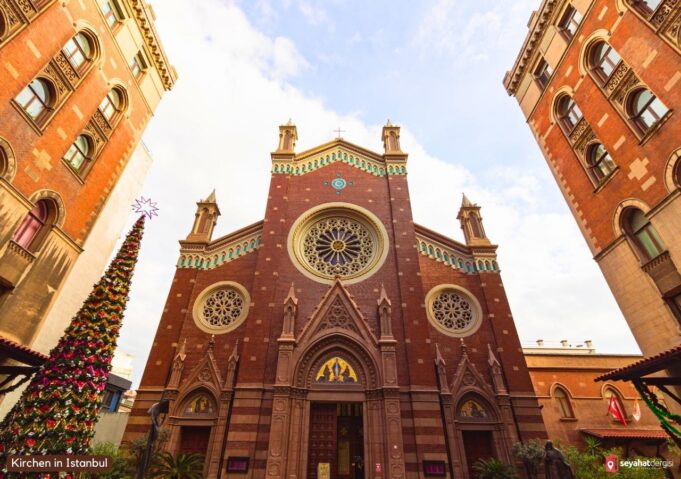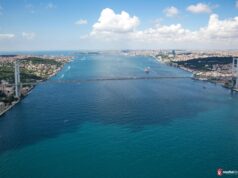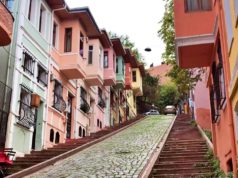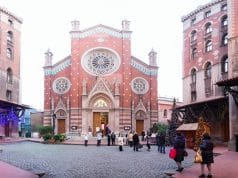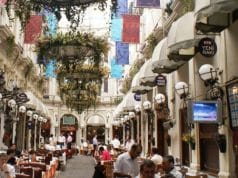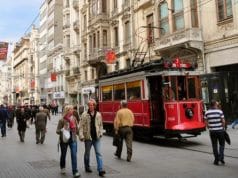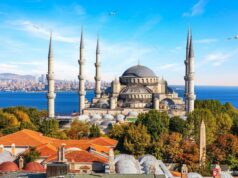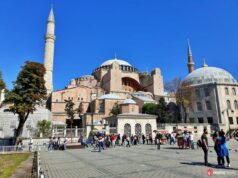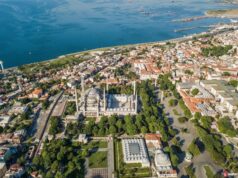Welcome to our fascinating article “The 10 Historic Churches in Istanbul: A Journey Through the Centuries“. In this article, we take you on an unforgettable journey to the amazing churches that reflect Istanbul’s rich history and culture. From magnificent Byzantine buildings to stunning Armenian churches, we explore the diversity of sacred architecture in this fascinating city. Join us as we delve into the world of spirituality, art and history and discover the unique significance of these historic sites.
Hagia Sophia
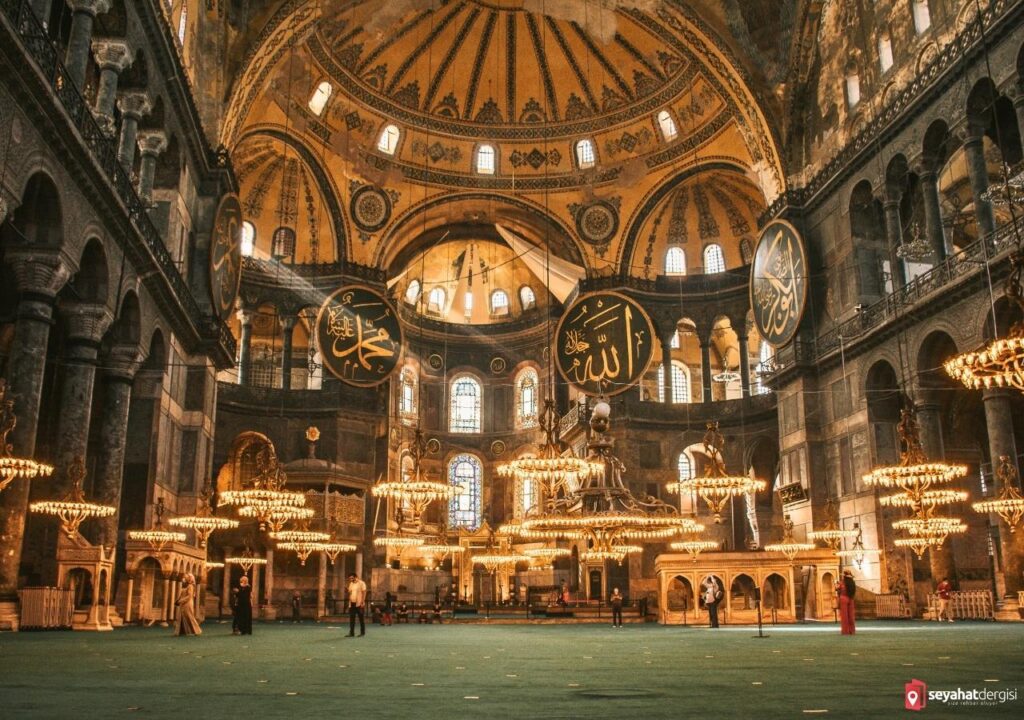
In the heart of Istanbul, the Hagia Sophia rises as a testament to the city’s rich history and cultural significance. Originally built as a cathedral during the Byzantine Empire, this architectural masterpiece was later transformed into a mosque and continues to fascinate visitors from around the world.
A brief overview of the history.
Commissioned by Emperor Justinian I in the 6th century, the Hagia Sophia was designed to be a magnificent cathedral that would tower above any other building of its time. Its majestic dome and ornate mosaics quickly earned it a reputation as an architectural masterpiece. For centuries it served as the main cathedral of the Eastern Orthodox Church and witnessed both religious ceremonies and imperial events.
The Transformation
In 1453, after the Ottoman conquest of Constantinople, the Hagia Sophia was transformed into a mosque by Sultan Mehmed II. The stunning mosaics were covered, minarets were added, and the building underwent several alterations to suit its new purpose. For nearly 500 years it functioned as a significant place of Islamic worship.
A Worldwide Known Landmark
Nowadays, the Hagia Sophia still has immense cultural and historical value. It was declared a museum in the early 20th century, symbolizing its role as a bridge between civilizations. In 2020, it was converted back into a mosque, sparking discussions about its significance as a common heritage.
Why you should visit them
The Hagia Sophia invites travelers and history buffs alike to explore its dual heritage. Within its walls you will find a fusion of Byzantine and Ottoman influences that coexist harmoniously. Its immense dome and stunning mosaics tell stories of times long past, while the prayers create an aura of spiritual reverence.
Visiting the Hagia Sophia offers a unique opportunity to stand in reverence before architectural genius, to experience the interplay of cultures and to reflect on the threads that connect us to history. This monumental building transcends time and religion and invites you to embark on a journey through the captivating narrative of Istanbul.
In the vibrant city of Istanbul, the Hagia Sophia stands as an enduring emblem of the harmonious fusion of cultures and beliefs. Its profound historical layers make it a must-see place that captures centuries of heritage, and its journey from cathedral to mosque is a testament to the ongoing spirit of human creativity and adaptability. For the exact location of the Hagia Sophia click here.
Die Chora Kirche (Kariye Museum)
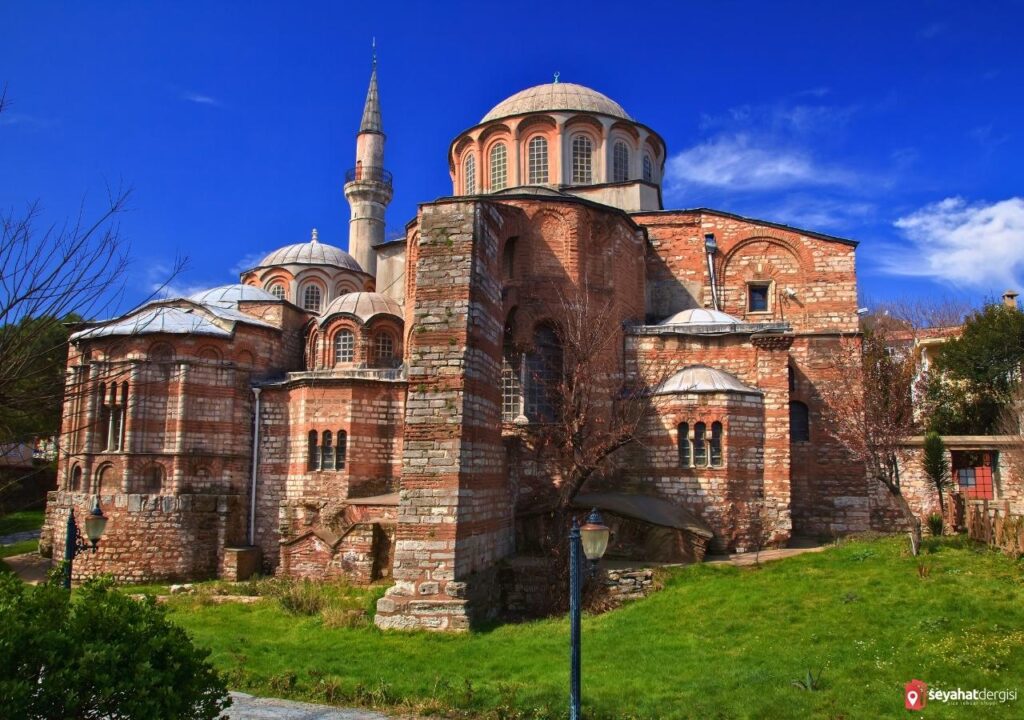
The Chora Church, also known as Kariye Mosque, is undoubtedly one of the most impressive religious buildings in Istanbul. Originally built in the 4th century as a monastic church, it underwent numerous alterations and renovations over the centuries. The current structure is the result of a remarkable blend of Byzantine and Ottoman architecture.
Why should you visit the Chora Church?
This church is famous for its stunning mosaics and frescoes depicting biblical stories and religious motifs. The ornate details and vivid colors are a true masterpiece of Byzantine art. A visit to the Chora Church is like a journey through history, where you can immerse yourself in the fascinating world of medieval art.
The Chora Church is a place of spiritual significance and cultural splendor. Its history reflects the rich diversity of Istanbul and is a must-see for any visitor interested in art, history and religion. Embark on a journey through time to this extraordinary church and be enchanted by its beauty and significance. For the exact location of The Chora Church click here.
Greek Orthodox Patriarchate of Istanbul (Fener Rum Patrikhanesi)
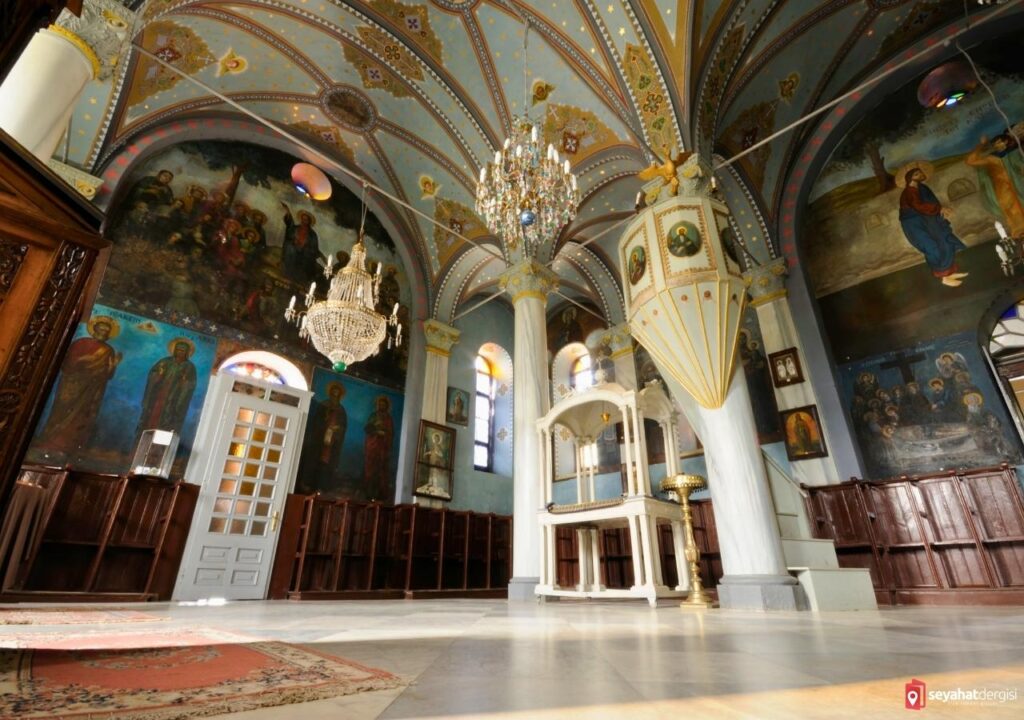
The Greek Orthodox Patriarchate of Istanbul, also known as Fener Rum Patrikhanesi, is one of the most important churches in Istanbul. With its rich history and its impressive architecture, it attracts visitors from all over the world.
The church is located in the Fener district, near the Golden Horn. It was founded in the 4th century and is the spiritual center of the Greek Orthodox Church. The Patriarchate of Constantinople is the oldest episcopate in Christendom and has a long tradition in Istanbul.
The church itself is an impressive building in Byzantine style. Its marked dome and the artful mosaics attract the attention of the visitors. The interior of the church features gorgeous icons and religious artifacts that reflect the history and beliefs of the Greek Orthodox community.
The Greek Orthodox Patriarchate of Istanbul plays a important role in the religious life of the Greek Orthodox community worldwide. The patriarch, who resides in the church, is the spiritual head of the community and has a significant role in spreading the faith and promoting interfaith dialogue.
Why should you visit the Greek Orthodox Patriarchate of Istanbul?
The church is not only a historical and architectural jewel, but also a place of spiritual significance. Here visitors can experience the unique atmosphere of Orthodox worship and experience the beauty of Orthodox liturgy. It is also an opportunity to learn more about the history and faith of the Greek Orthodox community.
In addition, the Greek Orthodox Patriarchate of Istanbul offers atmospheric views of the Golden Horn and the surrounding city. From the church grounds, you can explore the historic neighborhoods of Istanbul and discover the rich culture and history of this fascinating city. For the exact location of the Greek Orthodox Patriarchate of Istanbul click here.
Bulgarian Orthodox Church of St. Stephen
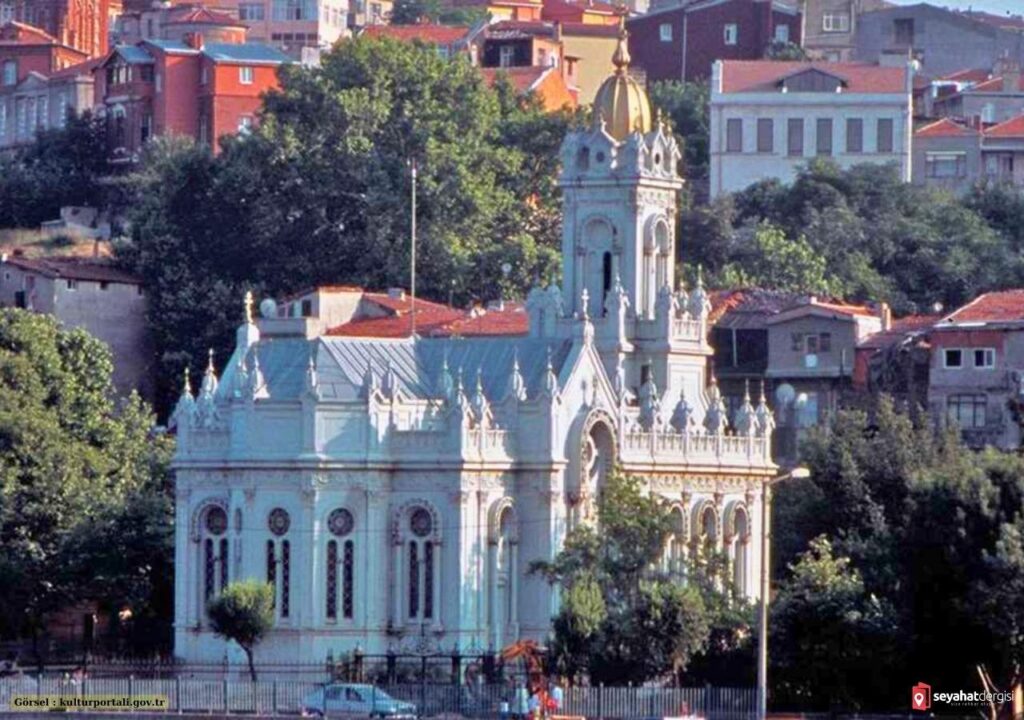
The Bulgarian Orthodox Church of St. Stephen is a fascinating spiritual jewel in the heart of Istanbul. An important religious center for the Bulgarian community in the city, this church is a place of devotion, history and cultural significance.
The history of St. Stephen’s Bulgarian Orthodox Church dates back to the 19th century. It was built to preserve the faith and identity of the Bulgarian community in Istanbul. The church was named after Saint Stefan, the patron saint of Bulgaria, and is a place of worship and spiritual experience.
Why should you visit the Bulgarian Orthodox Church of St. Stephen?
This church not only embodies the religious devotion of the Bulgarian community, but is also a place where the cultural beauty and spirituality of Bulgaria are expressed. The gorgeous architecture of the church and its artistic details attract visitors who want to experience the rich history and culture of Bulgaria.
The Bulgarian Orthodox Church of St. Stephen is not only a religious place, but also a window into Bulgarian identity and culture. A visit here allows one to experience the unique atmosphere of Bulgarian worship and feel the deep spiritual connection of this community with the Church. The church is a place of unity, fellowship and spiritual reflection that welcomes visitors from all over the world. For the exact location of the Bulgarian Orthodox Church of St. Stephen click here.
St. Anthony Church (Saint Antoine Kilisesi)
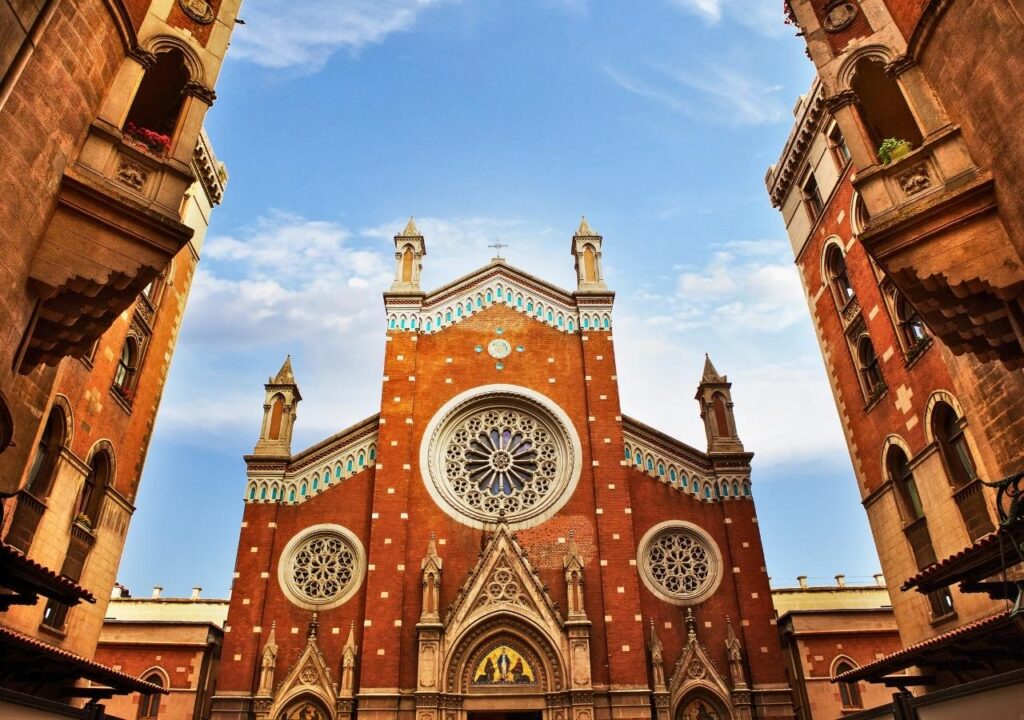
The St. Anthony Church is a truly remarkable place of worship in the midst of the fascinating city of Istanbul. With its imposing presence and its multi-layered history, this church is a witness to the religious and cultural diversity that characterizes the city.
The history of Saint Antoine Church dates back to the 18th century. It was founded by Franciscan monks and has played an important role in the history of Istanbul over time. The church represents not only the Catholic faith but also the cultural openness and tolerance that has characterized the city for centuries.
Why should you visit the St. Anthony Church?
This church is not only an important religious site but also a historical symbol of Istanbul’s diversity and tolerance. Its architectural beauty and cultural heritage attract visitors from all over the world who want to gain insight into the city’s rich history and cultural mosaic. For the exact location of St. Anthony’s Church in Istanbul click here. For all the details about St. Anthony’s Church, see our article.
The Calendar Hane Mosque, (formerly known as the Calendar Hane Church).
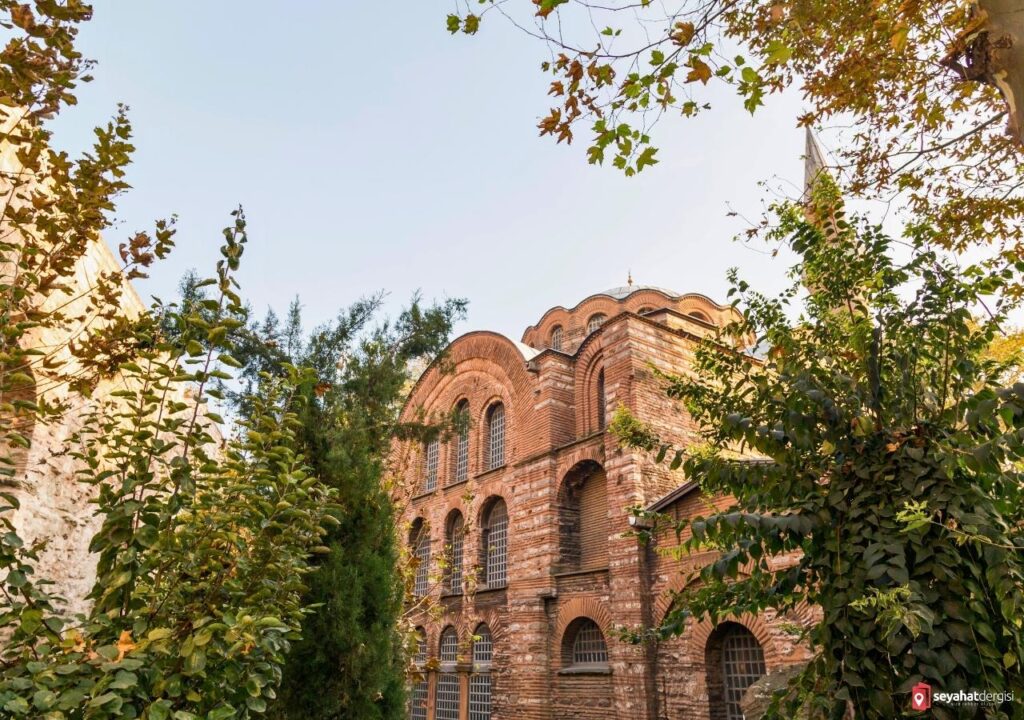
The Calendar Hane Mosque, formerly known as the Calendar Hane Church, is a fascinating architectural masterpiece amidst the historical treasures of this impressive city. This extraordinary site tells a rich story and embodies Istanbul’s cultural heritage.
The history of the Kalenderhane Mosque dates back to the Byzantine era. Originally built as an Orthodox church, it was later converted into a mosque. The name “Kalenderhane” is derived from the old rooms that served as a calendar and astronomy workshop. This mosque is not only a religious building, but also a living testimony of the history of the city.
Why should you visit the Calendar Hane Mosque?
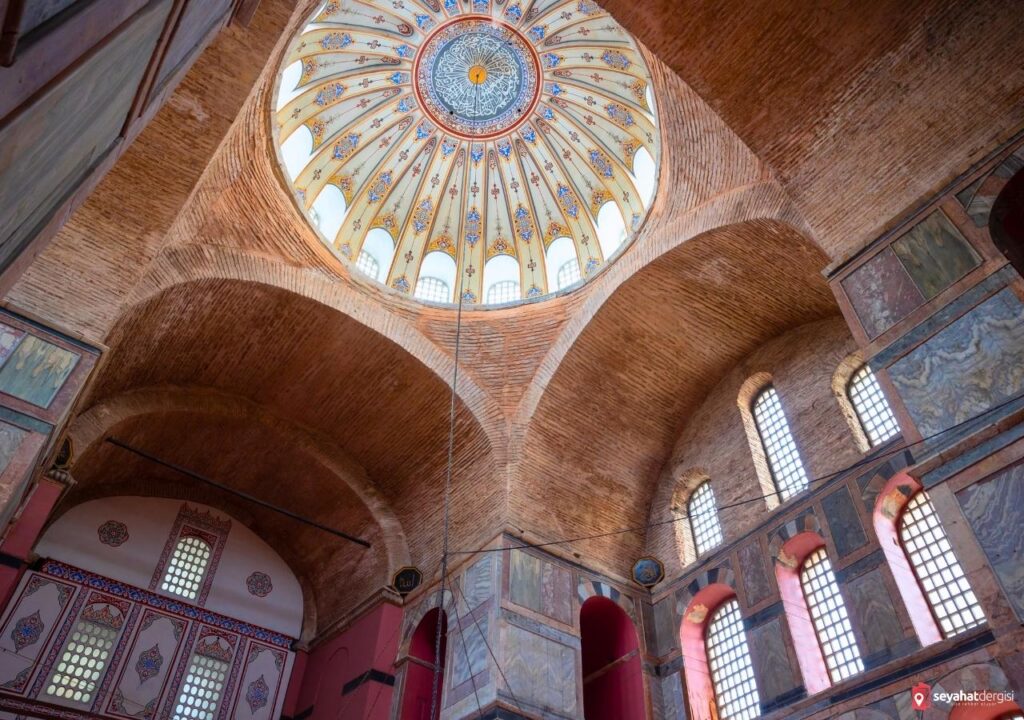
This site impresses not only with its impressive architecture and artistic design, but also with its multi-layered history. The combination of Byzantine and Ottoman culture makes it a unique place that reflects Istanbul’s cultural heritage.
The Calendar Hane Mosque is a time capsule that takes visitors back in time. Here you can admire the fine details of the architecture, explore ornate murals and experience the harmonious fusion of cultures. A visit to this mosque offers not only glimpses of the past, but also a deep appreciation for the architectural splendor and cultural heritage of this fascinating city.
seekers can admire the impressive architecture, explore religious artifacts, and experience the welcoming atmosphere of this church, which is emblematic of Istanbul’s rich cultural heritage. For the exact location of the Kalenderhane Mosque click here.
Church of St. Mary of the Mongols Churches in Istanbul
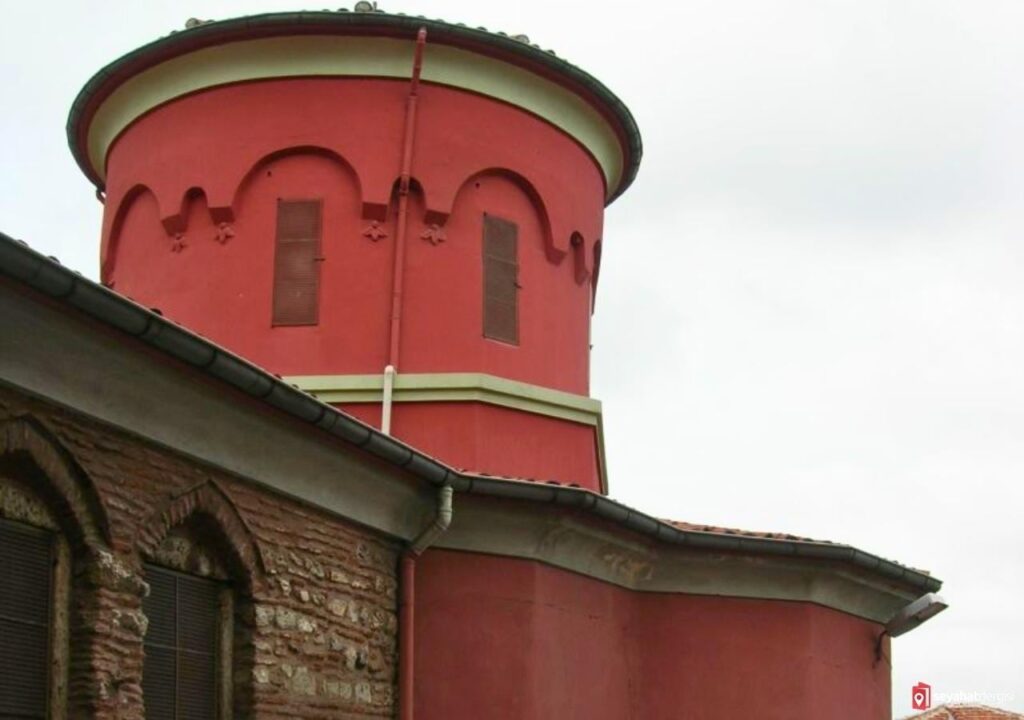
This is the Church of Mary of Mongols, also known as the Bloody Church. It was built in the year 1261. It is one of the rare churches in Istanbul that was not converted into a mosque after the conquest. At the request of Atik Sinan, whose origin was Greek and who was the architect of the Fatih Mosque, it remained a church at the request of Mehmet the Conqueror.
The copy of the edict of Mehmet the Conqueror, in which he ordered not to convert it into a mosque, is in this church. The original edict is in the Fener Greek Orthodox Patriarchate. In the church there is a large icon of St. Nicholas, who was the patron saint of sailors and is known as Santa Claus. Therefore, the church is called Mary of Mongols because a Byzantine princess named Mary was sent to Mongolia to marry Hulagu Khan.
But when she arrived, she learned that Khan had died. And then she was married to his son Abagu Khan. She was married to Abagu Khan for 15 years. After Abagu Khan died, she was offered to marry a Mongolian commander, but she did not want to. She could not bear it anymore and returned to her homeland and lived here in this church until her death. For the exact location of the Church of St. Mary of the Mongols click here.
Hagia Triada Church (Church of the Holy Trinity)
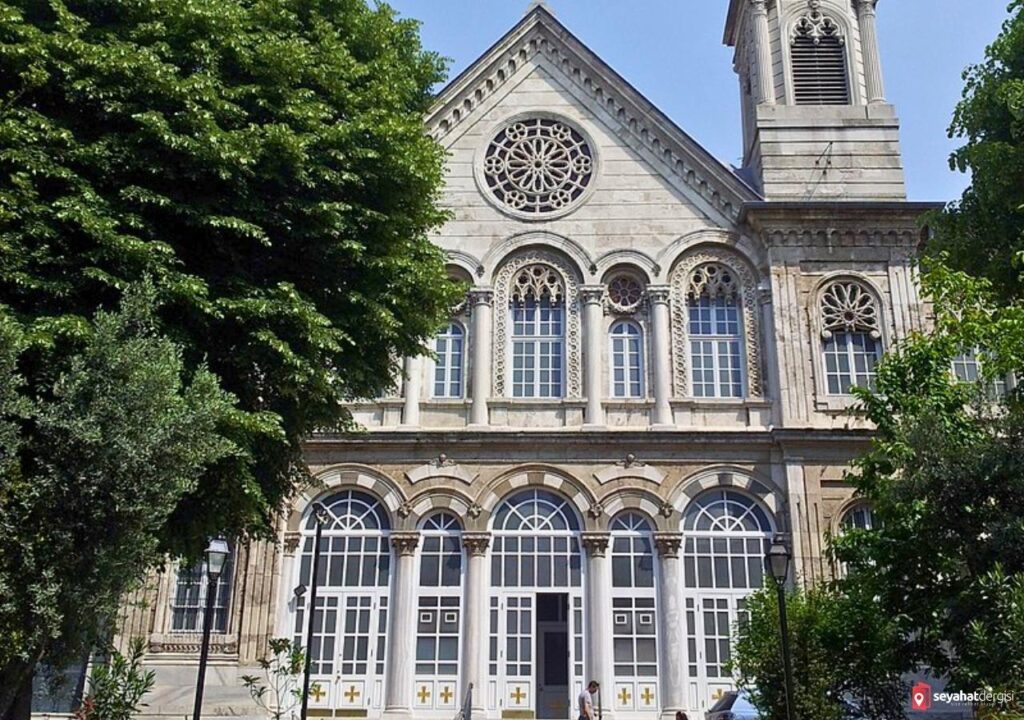
The Hagia Triada Church (Holy Trinity Church) is one of the prominent churches in Istanbul and an important place for the believers. The church is dedicated to the Holy Trinity (Father, Son and Holy Spirit) and is one of the most significant places of worship in the Pera region. It was built during the reign of Sultan Abdül Aziz and Sultan Abdülhamid and was ceremonially opened on September 11, 1880. As a masterpiece of the Greek Orthodox Rum Cemaati (congregation), it is a magnificent example of church architecture.
The construction of the church was based on the designs of architect Potesaros and took place over a period of 13 years, from 1867 to 1880. Hagia Triada Church is designed as a cruciform basilica with impressive domes and is distinguished by its characteristic two bell towers. The interior of the church is rich in symbolism and splendor. The marble iconostasis, decorated with icons, and the fascinating stained glass windows captivate the visitors’ eyes. Most of the icons follow the Byzantine Western style.
The Hagia Triada Church was recently extensively restored and shines in new splendor. This historic and spiritual jewel is an important site in the religious life of the Greek Orthodox community. The church not only offers a glimpse into the history and faith of the community, but is also a place of devotion and contemplation.
Hagia Triada Church is located in Beyoğlu, Istanbul, southwest of Taksim Square, at the corner of Meşelik Sokağı, İstiklal Caddesi and Sıraselviler Caddesi. As one of the largest Greek Orthodox churches in Istanbul, it continues to be actively used by the Romanian community and is a significant place of prayer and spirituality. This magnificent house of worship is a testament to the city’s rich history and culture, and should definitely be explored when visiting Istanbul. For the exact location of the Hagia Triada Church click here.
The Hagia Irene Church in Istanbul
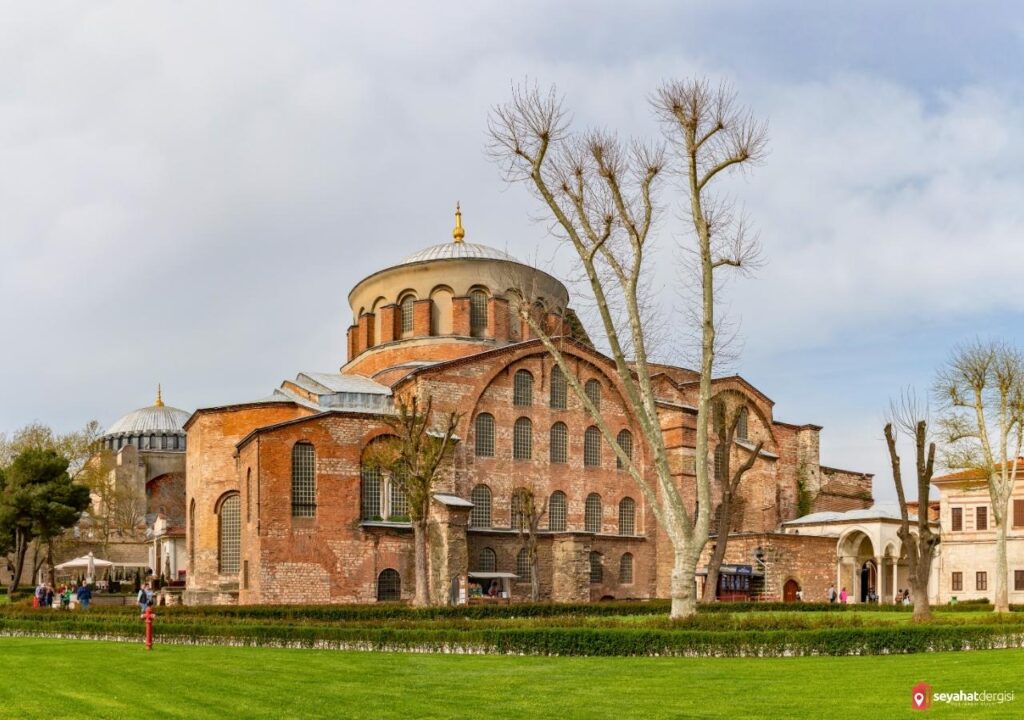
The Hagia Irene Church, also known as the Hagia Irene Museum, is one of the most fascinating religious buildings in Istanbul. Although often overshadowed by its famous sister, the Hagia Sophia, this church has a rich history and a unique atmosphere that attracts visitors from all over the world.
The church was built in the 4th century AD and is one of the oldest places of worship in Istanbul. It first served as an Orthodox church, later as an armory, and today as a museum. With its stunning architecture and impressive interior, Hagia Irene is a true jewel of Byzantine art.
The Hagia Irene Church is also of great importance from a historical point of view. It was the site of numerous important events, including imperial coronations and councils. Within the walls of this church, important decisions were made that shaped the history of the Byzantine Empire.
Why visit the Hagia Irene Church?
This historic site not only offers a glimpse into Istanbul’s religious past, but also an opportunity to explore the city’s impressive architecture and rich history. The blend of culture, history and spirituality makes Hagia Irene an unforgettable place not to be missed when visiting Istanbul. For the exact location of the Hagia Irene Church click here.
The Surp Krikor Illuminator Church.
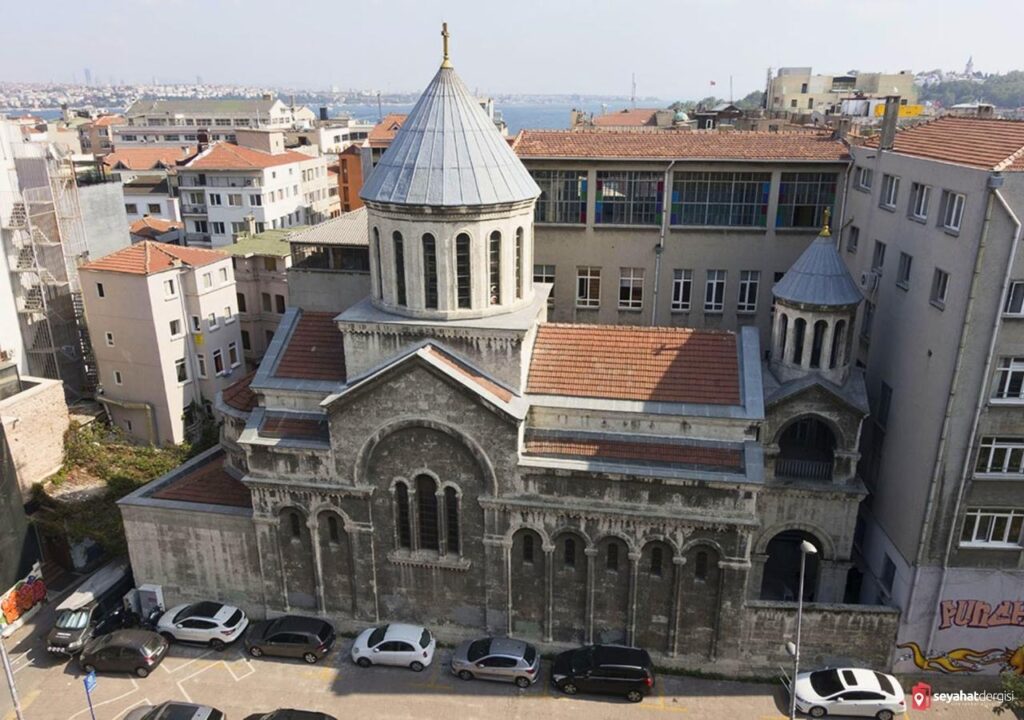
The Surp Krikor Illuminator Church, also known in Armenian as Aydınlatıcı Aziz Gregory Kilisesi, is a remarkable Armenian church in the heart of Istanbul. This magnificent church is a testament to the rich Armenian culture and history that has existed in the city for centuries.
The church was built in the Karaköy district of Beyoğlu and is a result of harmonious relations between the local Armenians and the Genoese of the time, who sold them a sacred plot of land. A generous Armenian merchant named Goms or Gozma from Kırım-Kefe financed the construction of the church on this land. It is reported that the master blacksmith Aved completed the mihrab of the church and built the Surp Haç Mabedi next door.
The Surp Krikor Illuminator Church is the oldest known Armenian church in Istanbul and was built during the Byzantine Empire, when the city was known as Constantinople. The architecture of the church is a combination of Armenian and Byzantine influences, and it served as a spiritual center for the Armenian community.
The history of the church is marked by fires and reconstruction. After several fires, including the great Galata fire of 1660, the church was rebuilt and restored each time. It has undergone various renovations over the centuries, yet remained an important place of worship and gathering for the Armenian community.
Visit the Surp Krikor Illuminator Church to experience its impressive architecture, ornate frescoes and historical significance. This church is not just a building, but a living symbol of the Armenian community’s deep connection to Istanbul. Discover the unique blend of spirituality, history and culture that the city has to offer. For the exact location of the Surp Krikor Illuminator Church click here.
Saint Peter and Paul Church
Saint Peter and Paul Church, is a Roman Catholic church in Galata. It is one of the important historical churches in Istanbul. The church houses one of the most important relics, namely one of the Bakire Hodegetria icons, which are claimed to have been created by the evangelist Luke.
The history of the church dates back to 1731, when it was hit by a devastating fire. However, one of the most important relics, the Bakire Hodegetria icon, was saved. The current structure of the church dates back to 1841-1843 and was rebuilt by the Fossati brothers.
Originally founded in the 16th century by the Dominicans, the church was built in Galata after the original building was converted into a mosque. The current structure was built in 1604 by the Genoese colony in its current location. After two fires, the church was rebuilt between 1841 and 1843 by the Swiss-Italian brothers Gaspare and Giuseppe Fossati.
The Saint Peter and Paul Church is one of the three remaining medieval Latin churches in Galata. Nowadays it serves the Italian community in collaboration with the local Maltese community. The architecture of the church is basilical in form with four side altars, while the dome above the choir is decorated with blue sky and golden stars. The back wall of the church was built along the old Genoese walls of Galata.
The exterior of the church reflects the historical presence of Ottoman rule. Churches in that period could not be built directly on streets or hills. The exterior of the church is surrounded by high walls covered with inscriptions. The churchyard shows elements of the Ottoman rule.
The Saint Peter and Paul Church is a place that not only has religious significance, but is also a testament to the historical connection between different cultures and religions in Istanbul. Visitors here have the opportunity to experience the history and architecture of the city first hand. The church invites you to immerse yourself in Istanbul’s rich past and explore the cultural diversity of this fascinating city. For the exact location of the Saint Peter and Paul Church click here.
That this article has given you an insight into the rich history and diversity of the historic churches in Istanbul. Each of these churches tells its own story and contributes to the cultural and spiritual beauty of this fascinating city. Whether you are looking for spiritual fulfillment, to expand historical knowledge, or simply to admire the stunning architecture, the churches in Istanbul offer something special for everyone. We invite you to visit these unique places to experience the magic and enchantment they hold.
For more fascinating insights into Istanbul’s rich history and its impressive sights, I recommend you to read my article on ‘Things to Do in Istanbul‘. Immerse yourself in the centuries-old splendor of this city and be enchanted by its historic churches and many other attractions.
We would love to hear from you! Feel free to tell us which of the historic churches in Istanbul you have visited and what unforgettable experiences you have had. Your comments and impressions are of great importance to us and help make our articles even more vivid and informative. We invite you to share your experiences with us and discover together the fascinating world of churches in Istanbul.


